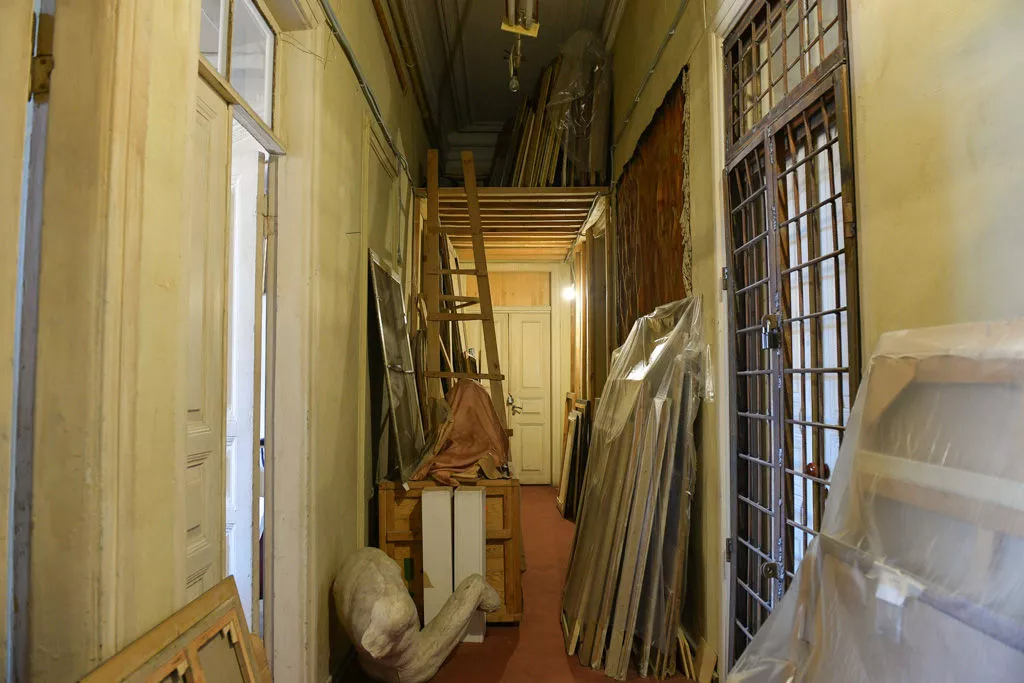Irresponsibility and Neglect: The Tragedy of Abkhazia’s National Art Gallery

This tragedy is more than a cultural loss; it is a wake-up call to the nation. | Photo: Elza Chanba
SUKHUM / AQW'A — In a tragic turn of event last night, the Central Exhibition Hall of the Union of Artists of Abkhazia, a storied institution housing a vast collection of artworks, was ravaged by a fire, marking a severe blow to the nation's cultural legacy. The National Art Gallery's entire collection, housed on the second floor, was almost completely destroyed. This catastrophe underscores years of neglect and mismanagement by Abkhazian officials, exposing a systemic disregard for the preservation of art and history.
The National Art Gallery, established in the 1960s, has long been a repository for both Abkhaz and international art. Its journey from a modest facility on Pushkin Street in Sukhum to its relocation to Lakoba Street pre-Patriotic War (1992-1993) was marked by challenges, yet the collection had miraculously survived the war. However, the post-war period witnessed a continuation of the gallery's struggles, exacerbated by broken promises and financial neglect.

Stacked in disarray and vulnerable to damage, the artworks of Abkhazia's National Art Gallery were kept in precarious conditions, foreshadowing a tragedy of cultural heritage lost to oversight and neglect.
The dire conditions in which these priceless artworks were stored were poignantly described by the gallery's Director, Suram Sakania. "The dampness caused the paintings to swell and the colours to crack. Proper storage requires individual casing for each artwork, a luxury we could not afford. We did our best to protect the most iconic works, including those of Chachba-Shervashidze and Bubnova, within our limited means," he stated, highlighting a painful narrative of neglect.

In the narrow corridors of Abkhazia's National Art Gallery, precious artworks were stored in cramped conditions, reflecting a grim reality of cultural neglect before the devastating blaze.
Despite repeated inspections and promises of improvements, the gallery's precarious situation remained unchanged. A 2011 proposal for including the gallery in the Investment Program was ignored, and subsequent pleas for assistance were met with indifference.
The fire, which engulfed the gallery last night, is not merely a loss of artistic works but a glaring indictment of the Abkhazian government's priorities. This incident reflects a profound disconnection between the state's duties and its actions, where the safeguarding of national heritage has been grossly overlooked.
As cultural commentator Larisa Khadzhimba lamented, "4,000 invaluable paintings, a testament to our republic's glory, were lost due to gross negligence in art conservation and fire safety."
In the words of Richard Chkadua, "Our cultural foundation has been eroded. Future generations will judge us harshly for this loss."
This tragedy is more than a cultural loss; it is a wake-up call to the nation. It highlights the urgent need for a responsible governance that prioritises the protection and preservation of Abkhazia's cultural and historical assets.